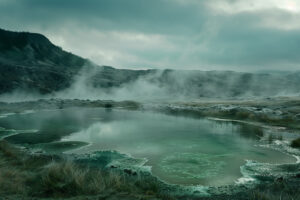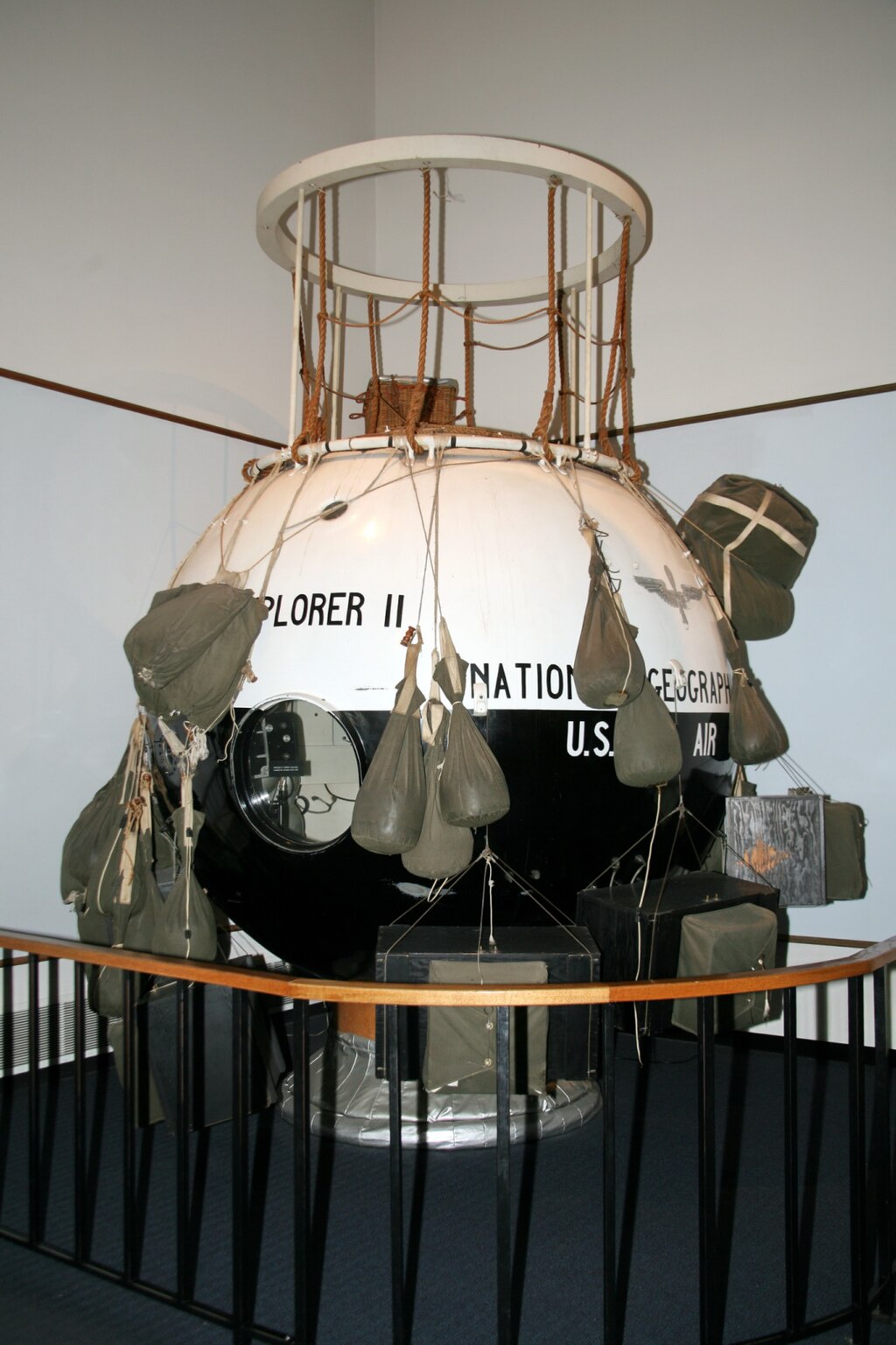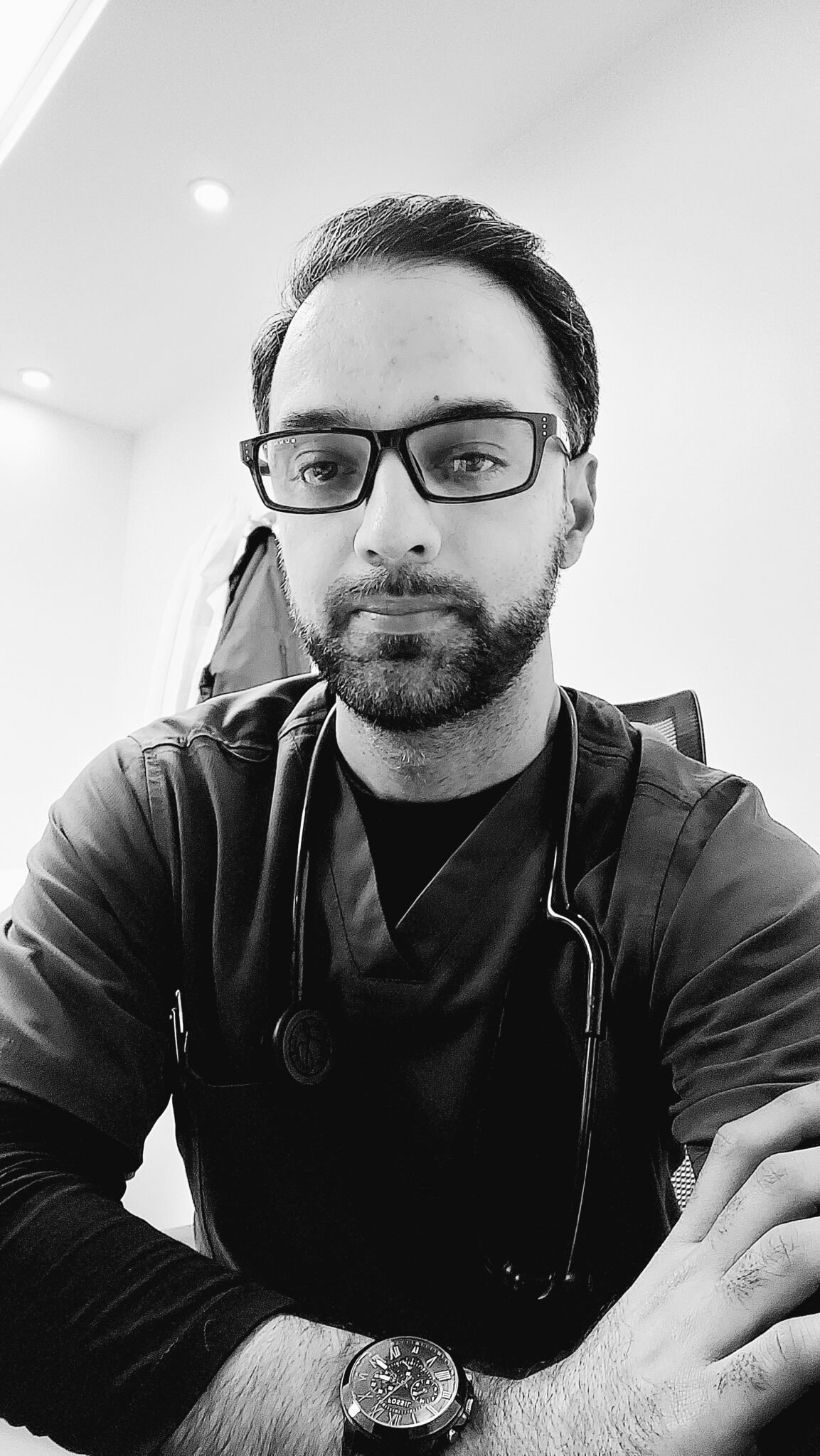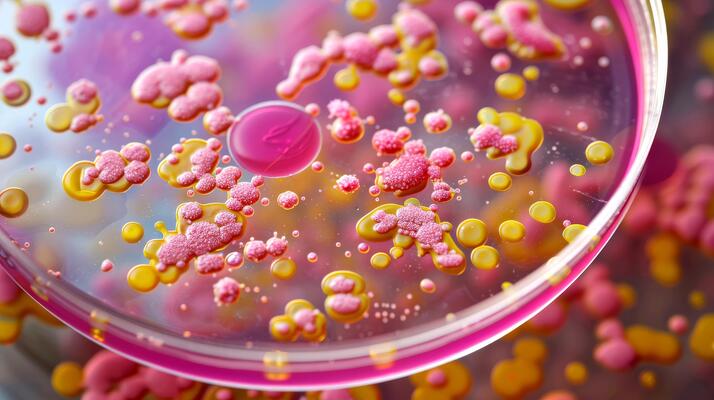People who are into sci-fi pop culture would have watched a popular cliché in this genre revolving around the arrival of an alien entity or a microorganism on Earth which has hitch-hiked with a returning team of astronauts. And what follows is panic, chaos, death, and eventually a last-ditch stand by humanity.
‘The Thing’ and ‘ The Andromeda Strain’ are two movies that classically fit the above description. This cliché pretty describes much how the internet has gone into a frenzy regarding a recent study published in Microbiome regarding the presence of 13 extensive drug-resistant strains of a bacterium called Acinetobacter bugandensis (already known for its resistance against antibiotics) on the international space station1.
The authors describe the isolation of strains of Acinetobacter bugandensis which are highly resistant to antibiotics, on board the ISS. Now this should be read after taking in a deep breath. Yes, the bacterium isolation already has a pedigree of being resistant to antibiotics on earth, however since the ISS has ongoing microbiological assessments and experiments going on all the time, these results were a part of the routine and regular assessment of flora aboard the ISS.
This assessment is done to ascertain how the bacterial flora adapts to space and whether it is a threat to the astronauts. However, it was concluded that the ‘Super Bug’ was not a threat to the astronauts on board the ISS nor was it an imminent threat to humanity.
Having said that astronauts and missions on return undergo heavy decontamination procedures and containment to prevent any intruder which has piggybacked to cause havoc on earth. The strains were found to have extensive changes in their genetic structure and function to make them resilient to the relentlessly harsh environment of space which is probably why they double up on their armament against anything that can threaten to kill them, yes, you thought that right, antibiotics.
Planet Earth among other threats also faces the grave threat of superbugs (antibiotic-resistant bacteria ), since the more we use antibiotics against them, the more they become resilient, and since we are not coming up with newer groups of antibiotics. Before talking about implications for the space industry, space exploration, and humanity it would be worthwhile to discuss briefly the hows and whys of microorganism resistance.
When the going gets tough, the tough get going!
We are reminded time and again as we pass through the years about endurance and forbearance in the face of calamity and odds. Citing that we would come out tougher and better equipped to face similar or even different situations in the future. Microorganisms especially bacteria (since we would be focusing primarily on them) follow the same principle of nature, the tougher the grind they pass through, the fiercer and more ravaging they become. In our search for life, as we know it, we have come across it in a place where one would least expect it.
Organisms that are found in places with conditions we consider extreme are referred to as extremophiles. These include but are not limited to salt beds, hot springs, hydrothermal vents, and ocean depths2. These organisms resist the environmental extremities, be it extremely acidic or alkaline pH of water, extremely high pressure to extremes of temperature. They equip themselves with mechanisms at the genetic level to ensure their survival.
Doctors come across a plethora of infections caused by bacteria in their clinical practice. However, while those infections are treated effectively in many instances by appropriate practice, sometimes antibiotics are unduly prescribed, underdosed, or given for durations that are shorter than what would be appropriate for the infection.

An interesting analogy would be in using a bazooka to take out an ant-sized target. This is when the target bacteria eventually acquire resistance against the medication, which is a global issue nowadays. Antibiotic stewardship is in place in institutions for this very reason, because, honestly, we are running short of options for bacteria that are resistant to most of our powerful antibiotics. This paints a bleak picture with the world already having faced a pandemic in recent times, we cannot afford another calamity of this proportion, at least in the foreseeable future.
Microbes in space
Space may be the final frontier for humans but calling it harsh, cold, and empty would be an understatement. It offers a myriad of factors that contribute to it being as relentless as it is. Space environments have parameters like altered gravity, vacuum, solar and UV radiation, and extremes of temperatures. And microorganism that beats these factors and bears through and eventually replicates would be considered an extremophile. Space environments include the interiors and exteriors of space stations, shuttles, and satellites.
The ISS for example harbors a diverse ecosystem of microbial flora3. This flora originates from the astronauts themselves plus since the equipment and its constituents originate from Earth, this also contributes to the diversity. And these bacteria eventually start colonizing the inner and outer surfaces of the ISS. As mentioned before, the extreme environmental conditions push the microorganisms into survival mode and they become resistant to these rigid conditions and thus thrive.
On the ISS for example, bacterial growth is found on the inside of vents, along cables and wiring which is constantly kept under check by the sweeping sanitizing measures carried out by astronauts. Since the barrage of adversity is persistent in space, the changes that these bacteria conjure up could lead them to become what we may call ‘Super Bugs’, which could be lethal for humans on the ISS and Earth.
Study of Microbes in the Earth’s Atmosphere and Space
Earth’s atmosphere extends up to 10,000 km above the surface. The atmosphere is divided into different layers according to temperature difference, composition, pressure, and density. The outermost layer which is almost beyond 600 km is the exosphere while the innermost is the troposphere. The layer above the troposphere is the stratosphere which extends from roughly 20 km above the surface to 50 km4.
Over the last century, numerous experiments have been conducted in the earth’s atmosphere namely in the stratosphere layer with balloons which meant to seek out the type of microbial life there and how it differed from what is present on the surface. Namely Louis Pasteur determined that the density of microbial life decreased with rising altitudes4.
A US-manned high-altitude balloon, explorer 2 was used to sample microorganisms (bacillus, Aspergillus, and Penicillium to name a few) from the stratosphere in 1935 and this was the first experiment of its kind5. Since then, numerous similar experiments have followed suit using balloons, rockets, and planes.
The key factors identified as stressors for microbes in the stratosphere were low temperatures and pressures, radiation, and inadequate nutrition5. The microorganisms found in these conditions were broadly fungi and spore-producing bacteria that survive these intense conditions however they are no threat to life on Earth.
Low Earth Orbit (LEO) is a term used for the area under 2000 km above the earth’s surface6 and comprises a host of stress factors for life including radiation, extreme temperatures, and vacuum and earth’s magnetosphere. Satellites, space shuttles, and stations (MIR and ISS) orbit in this region and have been used to perform experiments on microbial life to ascertain the effects of the stressors of LEO on them. Experiments have been conducted since the 1960s. Numerous projects have been set on the International Space Station by the European Space Agency (ESA) namely BIPAN and EXPOSE7,8.
The Japanese have set the TANPOPO experiment on the ISS-KIBO module of the ISS which is dedicated to astrobiology and the study of the effects of space on microbial life. In light of the experimental work on board the ISS, it can be considered a ‘ Microbial Observatory.’
However, since the conditions provided by space cannot be accessed all the time to study the effects of those stressors on microbial life, certain conditions are simulated in the laboratory conditions here on Earth. Those conditions may include and are not limited to microgravity, centrifuge, vacuum, and extremes of temperatures.
Considering the experiments conducted in LEO and ground-based lab work, the following are the findings and mechanisms whereby microbes become ‘Super.’
It has been seen that the metabolic production of bacteria (enzymes and other proteins) may increase or decrease in the stressors provided by space 9,10. Increased growth and proliferation11 of bacterial population along with increased virulence has been observed12. There is biofilm production in the flora above the ISS which protects the organism from the environment and ensures its growth13, this may be dangerous for the integrity of the infrastructure of the ISS as the flora may eat away at the cables and machinery.
There is an upregulation of genes that set up stress responses in bacteria. There is enhanced proliferation of bacteria in hypergravity (for example in shuttle reentry)14. Spores of the bacterium Bacillus subsites have been seen to survive radiation, vacuum, and microgravity15. These findings suggest that space makes microbes resilient and they prevail despite the odds.
This can potentially be of concern to Earth life since these toughened-up critters are battle-hardened and if they have survived the damning hostile environment of space, they could easily do away with what we throw at them if they break out on Earth. Luckily, we do not have evidence to date that shows that the ‘Microbial Apocalypse’ has happened or will happen soon, having said that this could change, and how we can keep averting it, will be covered in the ensuing discussion.

Planetary Protection & the Way Forward
Planetary protection is a protocol enforced and followed by NASA whereby policies are put in place that ensure measures to prevent the solar system bodies from being contaminated by terrestrial organisms and organic material carried by space programs. This stands to prevent any confounders in the search for extraterrestrial life.
The same protocol also ensures measures to prevent backward contamination of Earth and its biosphere by organisms/organic material carried back to Earth either as collected samples from other solar system bodies or through hitchhiking on returning space crafts16.
The Planetary Protection Department works with other space agencies to enforce the protocols during the construction of space crafts to ensure minimal terrestrial bacterial load and collaborates on plans for missions to other solar system bodies to protect other planetary bodies from contamination.
You might have come across documentaries of space crafts and the recently launched James Webb telescope being assembled. You might have noted that they have those HAZMAT suits on as they work on structures. This is to prevent the contamination of these deployed space-venturing structures by terrestrial microbial flora. These gigantic facilities are positive-pressure clean rooms whereby minimal microbial load is ensured.
In addition to this NASA used techniques such as DNA micro assays, bioinformatics, and spore assays17 to assess the microbial burden on surfaces and air in these rooms. It is worth mentioning that astronauts coming back from other planetary bodies are bound to be quarantined for a certain period before being allowed back into their routine lives.
The Apollo 11 astronauts also underwent the same quarantine procedures for 3 weeks. While we hear about the engineering and aerospace ingenuity of space missions, probes, and satellites all the time we seldom hear about this all-important aspect discussed hitherto.
Apparently, the space governing bodies have plans in place to prevent ‘forward’ and ‘backward’ contamination of planetary bodies. Coming back to the recently published study about a multi-drug resistant bacteria on the ISS. The thought of such bacterial strains causing disease on earth is nothing short of a world-ending nightmare, but one must consider a few points before jumping to a macabre conclusion.
Microbes grow tough in extreme conditions however it is not a given that they may remain as tough if their environment changes and are exposed to a different set of conditions. This could lead to a dwindling of the lethality factor for such microbes.
This could be an important aspect if, in the worst-case scenario, a highly mutated resistant bacterial strain coming from the ISS is set loose on Earth. However, The astronauts on the ISS are fine and coexisting with these strains of bacteria which is one of the reasons why there is no need to panic. Our bodies also undergo immense changes in space even at the genetic level, which could prove as a gain or loss in terms of protection against co-existing microbes.
The biggest challenges for humanity lie in the potential prospects of long-duration space ventures, e.g. to the moon, mars, and beyond. In these situations where humans face an uphill challenge to safeguard our biological sanctity from the harsh and unforgiving void of space, microbes will face the same if not fiercer challenges. Chances are, they will endure these long voyages with ease and may turn out to be a menace for long-voyage astronauts.
Upon touchdown, on other planets and planetary bodies, the worst we could do for life in the cosmos is to unleash an army of mutated microbes that have faced obstacles over long periods. This army of microbes could end up wiping out the Indigenous life as well as put our missions in jeopardy by infecting the colonizing humans and could confound our search for extraterrestrial life. We could be finding life on planets that we might have seeded by mistake.
Were we stand currently we have good measures in place to protect our beloved blue globe from otherworldly microbial invaders however we cannot say for sure how this will hold up in the future when we reach out into the solar system and beyond Coming to grips with how sturdy and resilient life is, from the microbial to the macro level, one does wonder if the ‘panspermia’ hypotheses could hold credence in contributing to spread of life throughout the cosmos.
Ongoing research aboard the ISS and in our lower atmosphere in parallel with the research of extremophiles on earth can lead us to in-depth answers as to how microbes survive and thrive in the most inhospitable of places, furthermore, techniques such as CRISPR applied in space microbiology could end up benefitting humans and microbes alike especially when there would have to no choice but to co-exist.
References:
- Sengupta, P., Muthamilselvi Sivabalan, S., Singh, N.K. et al. Genomic, functional, and metabolic enhancements in multidrug-resistant Enterobacter bugandensis facilitating its persistence and succession in the International Space Station. Microbiome 12, 62 (2024). https://doi.org/10.1186/s40168-024-01777-1
- Rothschild, L., Mancinelli, R. Life in extreme environments. Nature 409, 1092–1101 (2001). https://doi.org/10.1038/35059215
- Checinska Sielaff, A., Urbaniak, C., Mohan, G.B.M. et al. Characterization of the total and viable bacterial and fungal communities associated with the International Space Station surfaces. Microbiome 7, 50 (2019). https://doi.org/10.1186/s40168-019-0666-x
- https://www.noaa.gov/jetstream/atmosphere/layers-of-atmosphere#:~:text=Between%20about%2053%20miles%20(85,one%20descends%20toward%20the%20Earth.
- DasSarma, P.; Antunes, A.; Simões, M.F.; DasSarma, S. Earth’s Stratosphere and Microbial Life. Curr. Issues Mol. Biol. 2020, 38, 197-244. https://doi.org/10.21775/cimb.038.197
- “IADC Space Debris Mitigation Guidelines” (PDF). INTER-AGENCY SPACE DEBRIS COORDINATION COMMITTEE: Issued by Steering Group and Working Group 4. September 2007. Archived (PDF) from the original on 17 July 2018. Retrieved 17 July 2018. Region A, Low Earth Orbit (or LEO) Region – spherical region that extends from the Earth’s surface up to an altitude (Z) of 2,000 km
- Horneck G, Klaus DM, Mancinelli RL. Space microbiology. Microbiol Mol Biol Rev. 2010 Mar;74(1):121-56. doi: 10.1128/MMBR.00016-09. PMID: 20197502; PMCID: PMC2832349.
- K. Olsson-Francis, N.K. Ramkissoon, M.C. Macey, V.K. Pearson, S.P. Schwenzer, D.N. Johnson, Simulating microbial processes in extraterrestrial, aqueous environments, Journal of Microbiological Methods, 2020, 172, 105883, ISSN 0167-7012, https://doi.org/10.1016/j.mimet.2020.105883.
- Demain, A.L. and Fang, A. (2001), Secondary metabolism in simulated microgravity. Chem Record, 1: 333-346. https://doi.org/10.1002/tcr.1018
- Huang, B., Li, DG., Huang, Y. et al. Effects of spaceflight and simulated microgravity on microbial growth and secondary metabolism. Military Med Res 5, 18 (2018). https://doi.org/10.1186/s40779-018-0162-9
- Mennigmann, H.D., Lange, M. Growth and differentiation of Bacillus subtilis under microgravity. Naturwissenschaften 73, 415–417 (1986). https://doi.org/10.1007/BF00367283
- Wilson JW, Ott CM, Höner zu Bentrup K, Ramamurthy R, Quick L, Porwollik S, Cheng P, McClelland M, Tsaprailis G, Radabaugh T, Hunt A, Fernandez D, Richter E, Shah M, Kilcoyne M, Joshi L, Nelman-Gonzalez M, Hing S, Parra M, Dumars P, Norwood K, Bober R, Devich J, Ruggles A, Goulart C, Rupert M, Stodieck L, Stafford P, Catella L, Schurr MJ, Buchanan K, Morici L, McCracken J, Allen P, Baker-Coleman C, Hammond T, Vogel J, Nelson R, Pierson DL, Stefanyshyn-Piper HM, Nickerson CA. Space flight alters bacterial gene expression and virulence and reveals a role for global regulator Hfq. Proc Natl Acad Sci U S A. 2007 Oct 9;104(41):16299-304. doi: 10.1073/pnas.0707155104. Epub 2007 Sep 27. PMID: 17901201; PMCID: PMC2042201.
- Vukanti, R., Model, M.A. & Leff, L.G. Effect of modeled reduced gravity conditions on bacterial morphology and physiology. BMC Microbiol 12, 4 (2012). https://doi.org/10.1186/1471-2180-12-4
- Methods for General and Molecular Microbiology. Editor(s): C. A. Reddy, T. J. Beveridge, J. A. Breznak, G. A. Marzluf, T. M. Schmidt, L. R. Snyder. First published:17 August 2007.Print ISBN:9781119739159 |Online ISBN:9781683671619 |DOI:10.1128/9781555817497. Copyright © 2007 ASM Press
- G. Horneck, H. Bücker, G. Reitz,. Long-term survival of bacterial spores in space, Advances in Space Research, Volume 14, Issue 10, 1994, Pages 41-45, ISSN 0273-1177, https://doi.org/10.1016/0273-1177(94)90448-0.
- https://sma.nasa.gov/sma-disciplines/planetary-protection#:~:text=is%20Planetary%20Protection%3F-,Planetary%20Protection%20is%20the%20practice%20of%20protecting%20solar%20system%20bodies,system%20bodies%20(backward%20contamination
- La Duc MT, Kern R, Venkateswaran K. Microbial monitoring of spacecraft and associated environments. Microb Ecol. 2004 Feb;47(2):150-8. doi: 10.1007/s00248-003-1012-0. Epub 2004 Feb 2. PMID: 14749906.
More from the author: Love-Hate Relationship between the Gut Microbiota and the Brain

Dr Syed Hunain Riaz is a Physician with expertise and experience in Endocrinology & Metabolism with a passion for eliciting change through the dissemination and application of precise knowledge. He is a space enthusiast, avid reader, blog writer, amateur photographer ( Astro & every day), and gamer.
Writing interests include preventive & lifestyle medicine and psychosocial issues. Dr. Hunain believes in limitless creativity and productivity of the human mind. Nature of consciousness, reality, and patterns in the universe are areas of special interest. He can be reached at syedhunain@gmail.com

